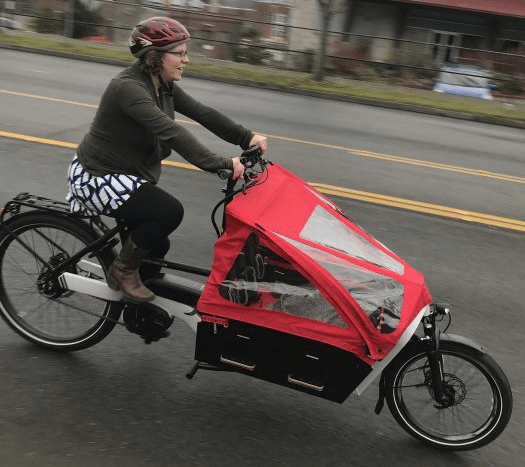Note: GJEL Accident Attorneys regularly sponsors coverage on Streetsblog San Francisco and Streetsblog California. Unless noted in the story, GJEL Accident Attorneys is not consulted for the content or editorial direction of the sponsored content.
UC Davis just published a policy brief that will be very useful for legislators considering expanding state zero emission vehicle incentives to include e-bikes.
Dillon Fitch, a researcher at UC Davis' Institute of Transportation Studies, combed through reports and studies on existing e-bike incentive programs to evaluate whether they help reduce car trips. While available research is limited, he found that the programs report that between 35 and fifty percent of e-bike trips would have been made by car if an e-bike had not been available.
Much of the research comes from European cities, where incentive programs are more common than in the U.S. Many are pilot programs, with an end date and a cap, that offer financial incentives to buy e-bikes. Some include other restrictions, such as only being available to current car commuters, or requiring e-bikes to be used for commuting, or adding higher incentives for cargo bikes.
In the U.S., "replacing car trips is a commonly reported reason for buying an e-bike," writes Fitch, "but only a few studies quantify the car substitution rate, ranging from eleven to 46 percent."
Measuring the number of miles that the e-bikes replace, however, has been harder, and existing research is scant. Two studies showed that e-bike users replace between 1.6 and 5.2 percent of their VMT with e-bike rides. "However, in some cities with small targeted programs, those numbers are much greater (e.g., twenty percent in Brighton, UK, and 33 percent in Utrecht)," writes Fitch.
"The breadth of findings suggest that pilot programs and evaluations would be needed to predict the total VMT reductions resulting from e-bike incentives in California. Nonetheless, evidence is strong that e-bike travel can have a measurable effect on reducing car travel."
Fitch points out that, unlike conventional bicycles, the costs of e-bikes "are one of the strongest barriers to adoption."
"Providing financial incentives to purchase e-bikes will help with adoption but should be coupled with other strategies," such as infrastructure and programming to encourage bike use. Bike-share services that offer e-bikes--or did until a few days ago--show evidence that they increase awareness of and experience with e-bikes, which could increase demand for owning private e-bikes as well, writes Fitch.
He suggests that the incentive amount used in European programs, about twenty to 33 percent of the purchase price, "may be a good starting point for California; however, incentive caps may need to be different from those in Europe, given the recent rise in e-bike retail prices" in the U.S.
In a conversation with Streetsblog, Fitch pointed out that e-bike incentive programs definitely encourage people to buy e-bikes--European programs have quickly run out of funding because demand is so high. It is likely they help reduce VMT as well--and there are many other co-benefits that are not measured, from improving access to jobs to increasing physical activity. These "should also be considered in any cost-benefit analysis of an e-bike incentive program," said Fitch.
The analysis and research findings are relevant for the legislature, which on Tuesday will discuss S.B. 400, from Senator Tom Umberg (D-Santa Ana). That bill would add e-bikes to the list of zero emission vehicles eligible for financial incentives in the existing EFMP/Clean Cars 4 All program. According to its sponsor, the California Bicycle Coalition, the bill would "basically give anyone (low-income) that is applying to scrap and replace their polluting car an additional choice, to opt for a voucher for an e-bike."
"E-bikes are great at replacing car trips," CalBike writes. "They make shuffling children to school a breeze, provide a healthy active transportation alternative, and make the overall bike commute comfortable and easy. In California, more than fifteen percent of vehicle trips are less than one mile, and eighty percent are less than ten miles. A recent survey of American e-bike users indicates that about half of electric bicycle trips replace car trips of an average length of nine miles."
CalBike is also asking the legislature to add $5 million to the California Clean Vehicle Rebate program, specifically for e-bikes, as part of its annual allocation from the Greenhouse Gas Reduction Fund. Currently CVRP only offers rebates for plug-in electric cars and zero emission motorcycles, and it is hard to get a shift in its funding allocations--thus the ask for more money.
Governor Newsom wants those annual allocations--not the continuous allocations to high-speed rail and other programs--to become multi-year allocations, to simplify the yearly budget process.
It would be a good time to start encouraging people to buy e-bikes.






